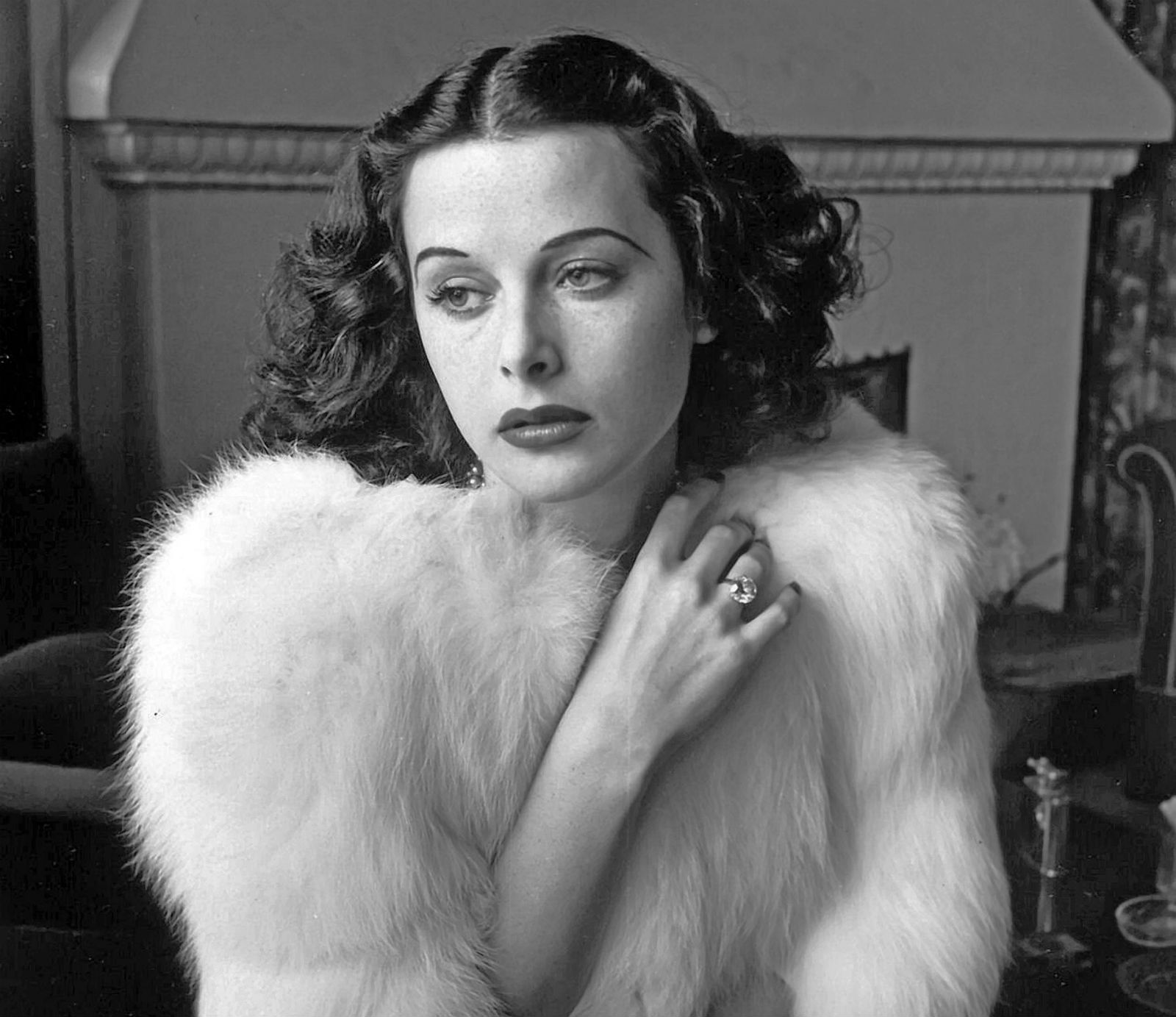Engrossing Doc Bombshell: The Hedy Lamarr Story Illuminates Brains Behind Beauty
By Liam Lacey
Rating: A
In the classic Hollywood era, the Austrian actress Hedy Lamarr, was a byword for beauty, a real-life Snow White with rosebud lips, flared nostrils, crescent eyebrows and jet-black hair parted in the middle. Billed by MGM as "the most beautiful woman in the world," she had flings with John F. Kennedy and Howard Hughes, multiple marriages and, between 1938 and 1958, acted in more than 30 movies, often as an exotic seductress.
Real-life Snow White Hedy Lamarr.
Also, during the Second World War, she co-invented a technology that anticipated WiFi and GPS, intended to help the Allies improving the success of their radio-guided torpedoes.
The stark tension between Lamarr’s highly valued looks and under-valued brains is the subject of Alexandra Dean's engrossing documentary, Bombshell: The Hedy Lamarr Story. While the story of a brilliant woman smothered by the Hollywood star system is inherently interesting and has been the subject of several books and a play in recent years, Bombshell has a particularly timely sting in the wake of the Weinstein sexual abuse revelations.
It's hard not to wince at the interview with nonagenarian comedian Mel Brooks, who says he came to Hollywood because of Hedy Lamarr, telling himself: "If I don't get to marry her, I'll take her to dinner and feel her up under the table. Whatever I could get."
Born Hedwig Eva Maria Kiesler in 1914 in upper-middle-class Jewish neighbourhood in Vienna (Freud's grandson's wife was her speech coach), Lamarr first gained notoriety as a teen actress in the 1933 Czech-Austrian drama Ecstasy, in which she appeared nude and simulated an orgasm. Four years later, she escaped from her over-bearing first husband, an Austrian arms manufacturer, and ended up in Los Angeles at MGM, where Louis B. Meyer changed her name and created her sultry persona.
Bombshell is a well-paced, if conventional, mixture of archival clips, talking-head interviews with historians, biographers, children and friends, including Lamarr's friend, the late Robert Osborne of Turner Classic Movies. None of it is new, though the film has one fresh contribution, which is the voice of Lamarr herself. Journalist Fleming Meeks did a 1990 profile of the then-76-year-old former star for Forbes Magazine, focusing on her work as an inventor. His cassette tapes of those interviews provide the narrative spine for the film.
She describes the development of her most famous invention, created with her friend the avant-garde composer, George Antheil, which was intended to help the Allied war effort: a communication system for a radio-controlled torpedo that couldn’t be jammed because the signals changed frequencies.
Lamarr and Antheil used the mechanism of two player pianos to "frequency hop" the radio signal to avoid jamming. Similar ideas are the basis of Bluetooth, WiFi and modern GPS devices. Though Lamarr and Antheil were granted a patent for the device in 1942, the Navy rejected it and later adapted it without giving her credit.
While skeptics speculated the uschooled Lamarr must have taken the idea from her first husband, there's plenty of verification for Lamarr's inventing talents, including the pages of her notebooks, owned by her son, which are shown on screen. Among her ideas, she developed dissolvable cola tablets, and helped her boyfriend Howard Hughes design better airplane wings by studying bird wings and fish fins. From her 40s on, during her many plastic surgery operations, she convinced surgeons to adopt techniques her hiding scars.
Smart as she was, Lamarr's personal life was very messy. Her six marriages lasted about three years on average. Her attempt at producing her own films resulted in financial disaster. She got hooked on amphetamines. She was arrested for shoplifting (while carrying $14,000 in cash). Most shockingly, she gave up her oldest son for adoption when he was 12 years old. In her later years, she became a recluse living in Florida, who communicated with friends and family by telephone.
That's not to say Bombshell is not an entirely downbeat story. Before she died at 85 in 2000, Lamarr finally received the intellectual recognition that she long craved. In an amusing video from 1977 we see Lamarr's son, Tony, accept an award on her behalf from the Electronic Frontier Foundation, honouring her pioneering work. While he's in the middle of an auditorium, his mother calls him on his cell phone to ask how the ceremony went. The cell is just one of the technologies made possible by Lamarr's "frequency hopping" invention. Appropriately, the audience responded with a standing ovation.
Bombshell: The Hedy Lamarr Story. Written and directed by Alexandra Dean. Playing Sunday (November 26) to Thursday (November 30) at Toronto’s Ted Rogers Hot Docs Theatre.

